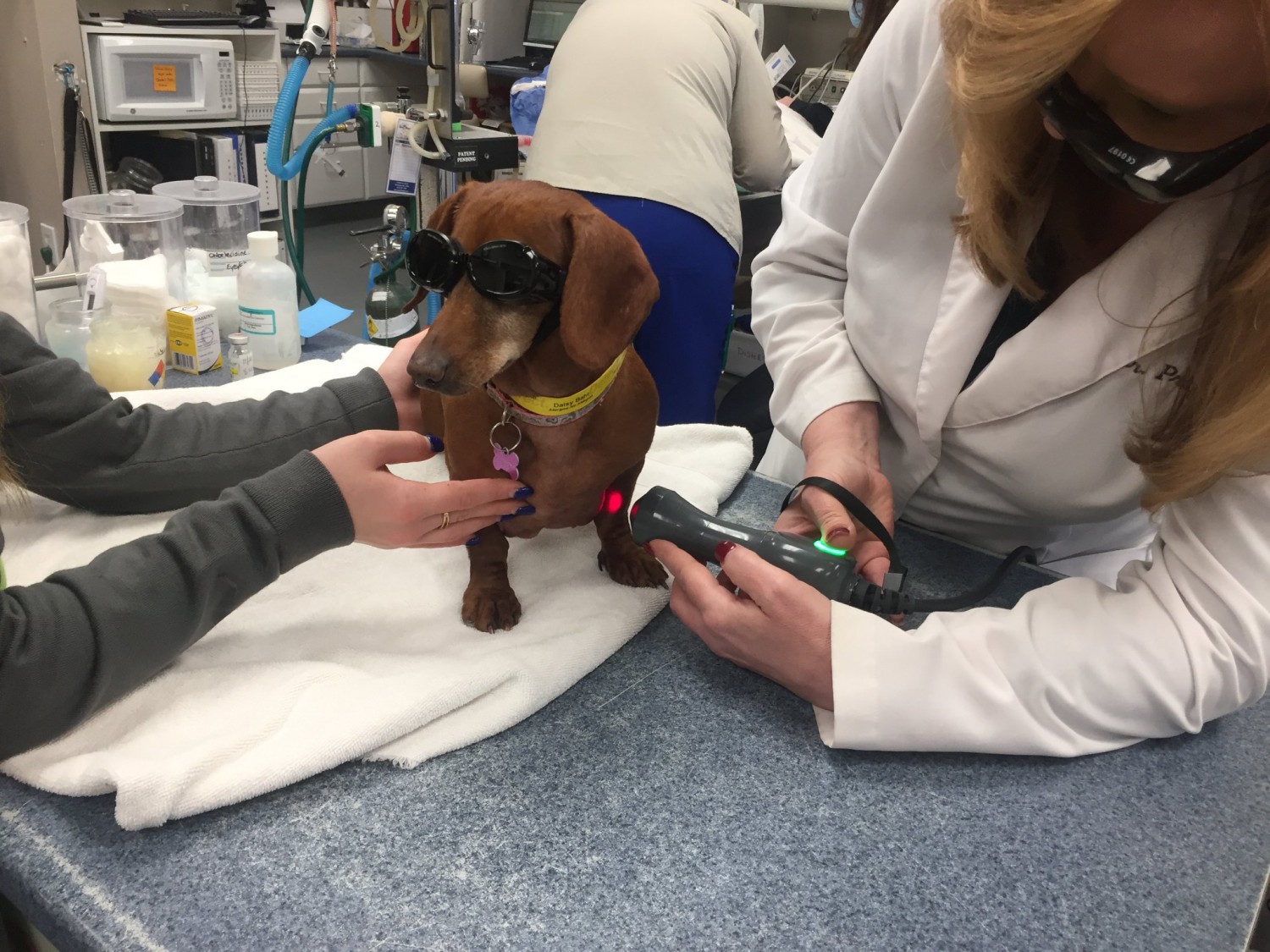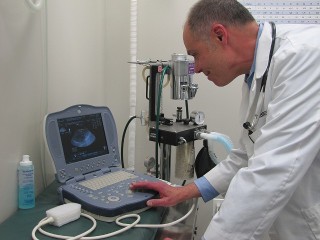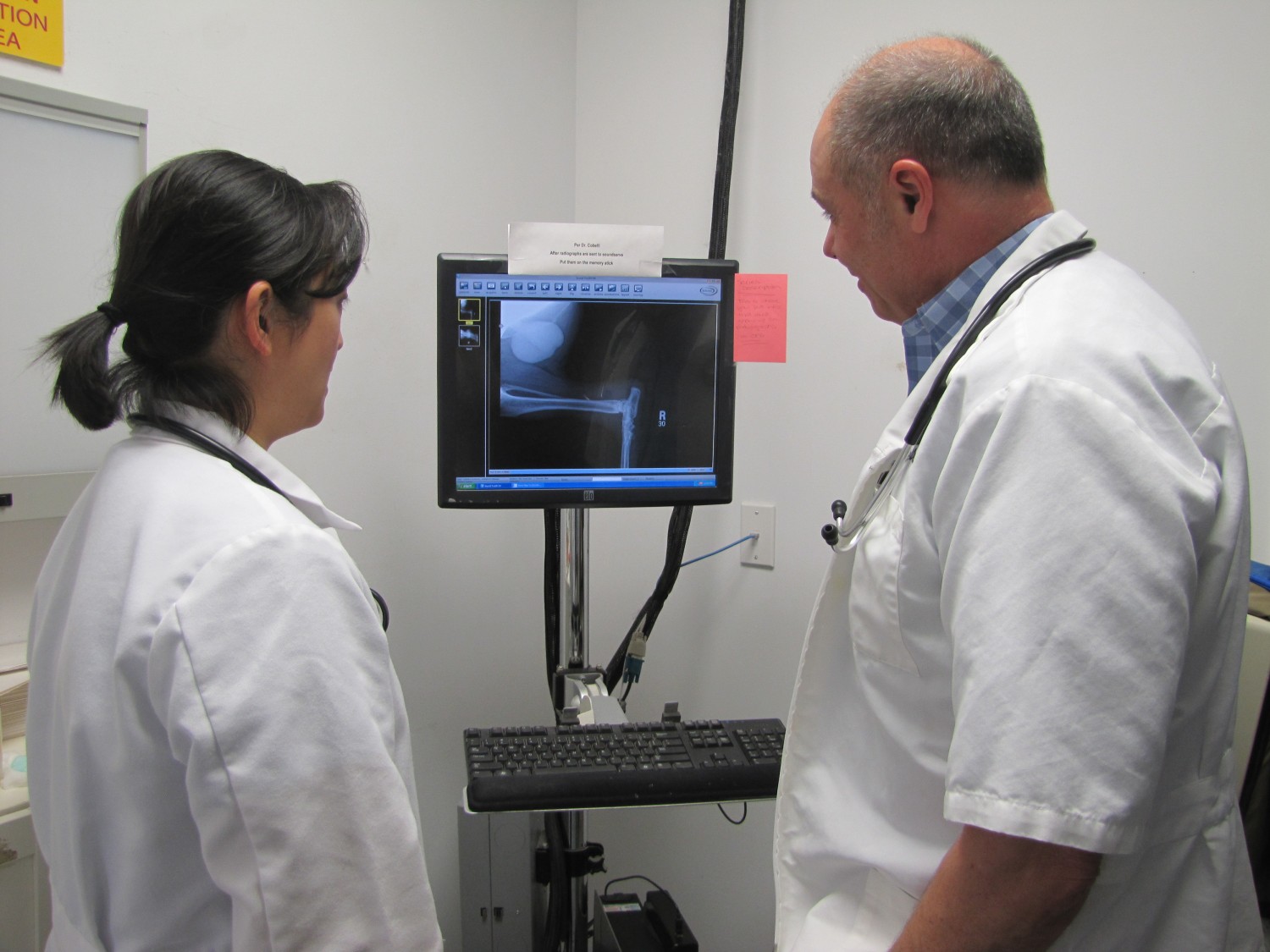|
Advanced Technology
When it comes to tools of the veterinary trade, we rely first and foremost on our skilled hands and eyes, but when a case calls for more advanced equipment, we are well-outfitted. Quarry Ridge Animal Hospital has invested in the latest diagnostic and therapeutic technologies to ensure your pet gets the best care available.
|
Therapeutic Laser
Our Class IV Therapeutic Laser is a remarkably effective and versatile tool. Using low levels of light to increase circulation directly at the site of an injury or wound, treatments like laser acupuncture reduce inflammation, relieve pain, and promote healing.
We use our laser to treat the symptoms of arthritis, hip and elbow dysplasia, inflammatory bowel disease, lick granulomas, injuries and wounds, otitis externa (swimmer’s ear), post-surgical incisions, and so much more.
A laser therapy session typically lasts 20-40 minutes. The procedure is non-invasive and treatments require no medication and virtually no recovery time. In fact, many pets relax during treatments—some even doze off!
|
 |
|
|
|
Digital Ultrasound and Echocardiogram
Ultrasonography provides a “live look” at organs and localized areas, enabling us to identify normal and abnormal structures in the abdominal and chest cavities. We use our digital ultrasound to view the heart, lungs, liver, spleen, gallbladder, pancreas, bladder, kidneys and urinary tract, parts of the stomach and intestines, reproductive organs, adrenal glands, and lymph nodes.
Our Boarded Veterinary Practitioner performs digital ultrasonography to detect areas of excess fluids or inflammation. It’s one of the tools we may use to diagnose and assess cancers. We can also monitor an animal’s pregnancy.
Ultrasound imaging is unique because it can display a moving image. For example, when performing an echocardiogram, not only can the doctor see the heart, but also observe the movement of the heart valves and chambers, blood flow through the heart, and contractions of the heart muscle.
Our digital equipment can capture still images to save and print for further examination, as well. This technology also allows us to instantly send digital images to specialists for consultation.
The procedure is painless. We may clip or shave the area(s) where we’ll apply the ultrasound probe in order to get the clearest, most accurate images. Anesthesia is rarely required; sometimes, a mild sedative can help a particularly anxious or restless animal relax and stay still during the exam.
|
 |
|
|
|
Digital X-Ray
X-ray is a valuable tool in diagnosing disease and injury. Our state-of-the-art digital X-ray equipment captures images quickly and allows us to see the bones and organs in greater detail than ever before. We use it to diagnose fractures, locate and identify foreign bodies, examine enlarged organs, and more.
We maintain excellent relationships with veterinary radiology specialists so that we can electronically share the digital images and receive quick consultations on complex cases. We can also email the images to you for your records.
|
 |
|
|
|
Endoscopy and Colonoscopy
Endoscopy and colonoscopy are non-invasive diagnostic procedures that let us examine the stomach and gastrointestinal tract. We use our endoscope, camera, and video screen to look for inflammation, swelling, and other abnormalities. The equipment even allows us to take small tissue samples/biopsies for closer examination. We can also use our endoscope to look for foreign bodies (sticks, bones, toys, hairballs, etc.) and, in some cases, it may be possible to remove a foreign body.
Anesthesia is required for an endoscopic procedure, so we preform an examination and blood work in advance. Your pet will also need to be fasted for 12-24 hours before the procedure—your doctor will provide feeding instructions.
|
|